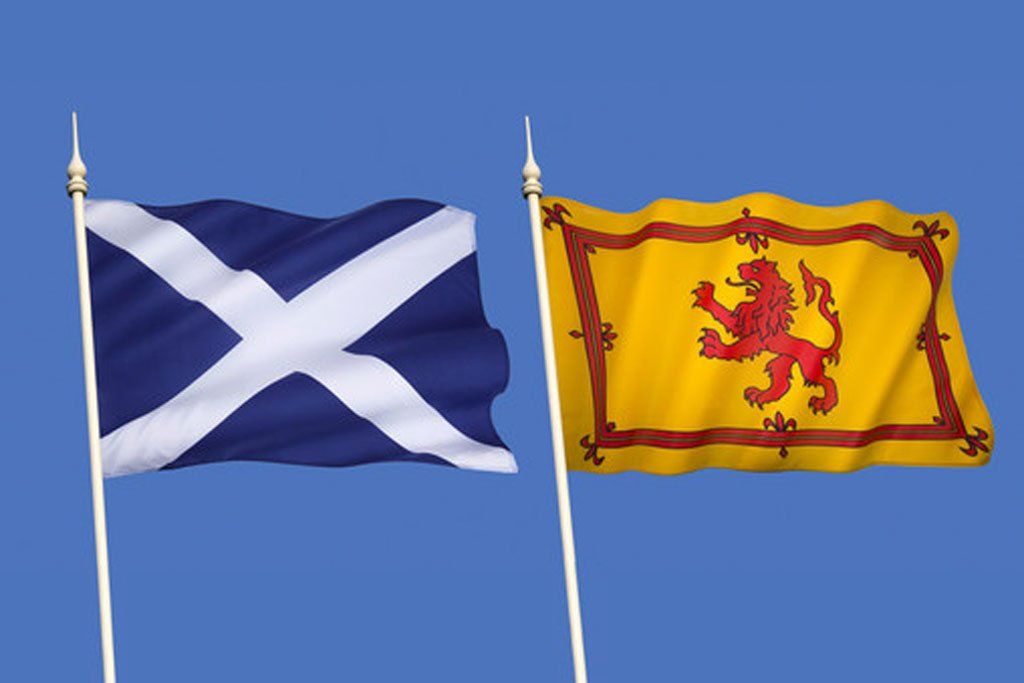Why does Scotland have two flags?
A tour in Scotland leaves visitors with lots of questions (and hopefully answers some too!) about the nation’s ancient past. Every street corner or field is suggestive of some historical significance or symbolism. Perhaps it is no surprise then, that Scotland’s national flag is also brimming with symbols, history and an intriguing back story.
There are two flags associated with Scotland; one may be more well-known than the other, depending on the stories and legends you may have heard.
The Saltire is perhaps the more easily recognised flags. “Saltire” means “a cross with diagonal bars of equal length”and is embodied in this instance by St. Andrews Cross over a blue background to make up the distinctive design of the official Scottish national flag. The design was first hoisted in 1512 and is accepted as one of the world’s oldest flags still in use today. To get the back story for the Saltire’s adoption by the people of Scotland, one must go back millennia! St. Andrew was the younger brother of Simon Peter and one of Jesus’ Apostles. Around 60AD, Andrew was crucified in Greece by the Romans. Not thinking himself worthy of the same shape Jesus was crucified on, Andrew was nailed to a diagonal cross instead. Move forward 700 years for the next facet of the story: in 832AD, the Pictish King Angus II, led his forces into battle against the English King Aethelstans’ army of Angles and Saxons. The night before battle, King Angus had a vision of St Andrew in a dream, who assured the King of victory against the English. The next morning, the troops were awestruck by a gleaming white Saltire across the blue sky. The omen inspired the embattled army to victory and thus cemented the Saltire’s place in Scottish history.
“The Lion Rampant” owes its name to the stance and attitude of the featured Lion on hind legs, ready to strike. The banner is considered by many to be the unofficial flag of Scotland and is more commonly known as the ‘Royal Flag of Scotland’, referring to the emblem’s association with the monarchy. Seeing as Scotland has not had a King or Queen since the 17th Century, the Lion Rampant now belongs to Queen Elizabeth II and her heirs. Historians generally concur that the Lion was used as a symbol of the Scottish Kingdom as early as 1222, by King Alexander II, whose seals were emblazoned with the symbol. Arguably, the Lion Rampant may have been used even earlier, by King William I (aka William The Lion) as a banner in times of battle in the mid-1100’s. In more recent times, the Lion Rampant has traditionally only been allowed for use by the royalty, owing to an Act of Parliament in 1672. Despite this, at sporting matches in Scotland it is common to see spectators waving the banner with pride; the illegality doesn’t seem to bother the authorities!
Contact Adams & Butler at sales@adamsandbutler.com for further information on Scottish touring that caters to every individual interest!
Back to Blog listing



